| Although there was an original Saxon church at this location, nothing remains of it nor of a later Early Norman cathedral. The choir at the east end of the cathedral was rebuilt after the fire of 1174 and in the late 1370's a new nave was begun. The cathedral is thus a mixture of styles. The cathedral is the mother church of Anglican Christianity and especially renown because of the murder in the cathedral of Archbishop Thomas Becket in 1170. |
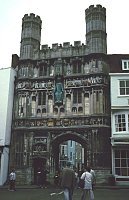
|
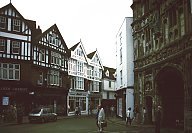
|
Christ Church GatewayThis gate is the main entrance into the Cathedral precinct. Built during the Tudor period, the Tudor rose as well as the heraldic symbols of Henry VII appear on the gateway. The figure of a welcoming Christ at the center is a modern replacement of a statue destroyed during the Puritan Revolution. |
| |
|
Left and center: Canterbury from the southwest; unlike most cathedrals, Canterbury has its main entrance at the southwest (seen in center photo); right: view of the west frontFrom the gate one can only see about half of the cathedral's total length (about 540 feet). Looking at the cathedral from Christ Church Gateway one sees 14th and 15th additions to the church, work in the Perpendicular Gothic style.
|
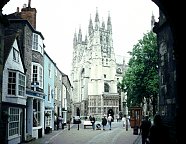
|
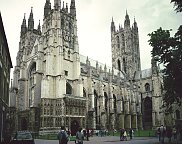
|
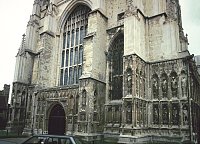
|
| |
|
Nave exterior |
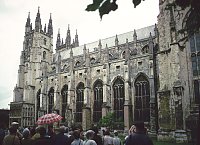
|
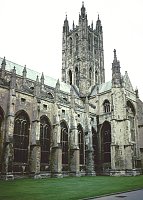
|
| |
|
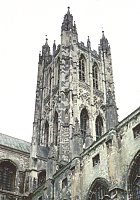
|
Bell Harry TowerThis central tower of the cathedral was completed in 1496, replacing a Norman tower tower with a steeple; it is built of brick and faced with stone. The bell at the top is called Bell Harry. |
| |
|
Nave exterior |
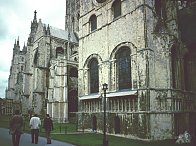
|
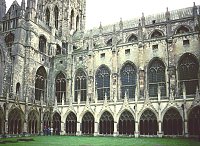
|
| |
|
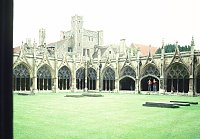
|
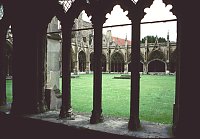
|
CloistersThrough the cloisters monks could enter the chapter house, refectory, and dormitories as well as the cathedral. |
| |
|
The cloisters; the interior with fan vaultingThe intricate tracery of the vaulting is characteristic of the late English Gothic style (Perpendicular style). The lace-like ribs are ornamental without structural purposes. The bosses have the heraldic symbols of those who donated money for the cathedral.
|
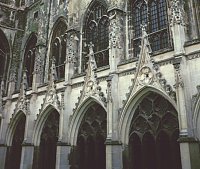
|
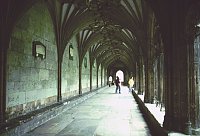
|
| |
|
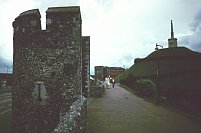
|
The city wallsMedieval walls were built on the foundations constructed by the Romans. Today these still circle much of the central city. On the right is a mound of great antiquity with an obelisk at its summit. |


 Click here to return to index of art historical sites.
Click here to return to index of art historical sites.
 Click here to return to index of artists and architects.
Click here to return to index of artists and architects.
 Click here to return to chronological index.
Click here to return to chronological index.
 Click here to see the home page of Bluffton College.
Click here to see the home page of Bluffton College.
